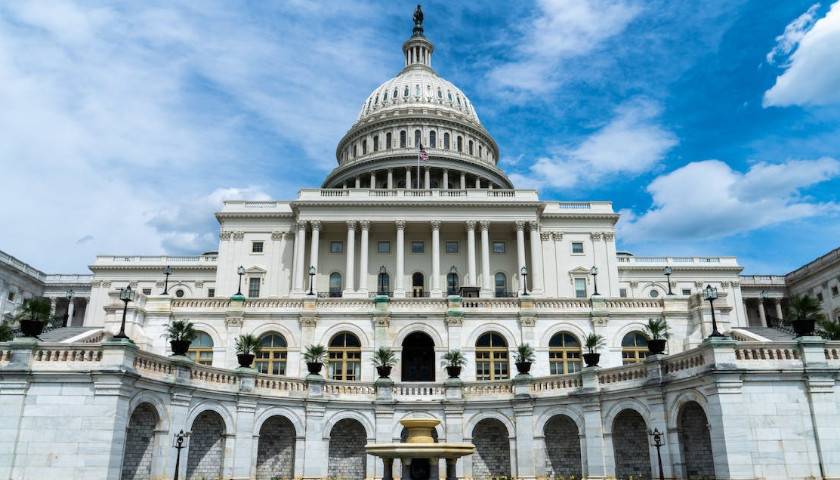by Peter Roff
If you follow politics and didn’t know that voters in Charleston, South Carolina, elected the city’s first Republican mayor in almost a century and a half, you can be forgiven. A lot of people missed it because, while it was covered, the legacy media failed, unsurprisingly, to recognize it for the landmark it is.
The scant attention paid to the outcome of that race compared to, say, the GOP’s failure to take over the Virginia Legislature is a discordant note that throws off an otherwise harmonious national narrative that has the Republican Party hopelessly divided and unable to win elections now that Bidenomics is working.
The narrative is wrong. The GOP did lose races it otherwise might have won, but the returns show the party is far from self-destructing over Trump or abortion or anything else.
 Take Virginia. The effort led by GOP Gov. Glenn Youngkin to win majorities in both chambers of the Virginia Legislature came up short, but just by a few seats and a few thousand votes. The Republican Standard’s Shaun Kenney puts it this way:
Take Virginia. The effort led by GOP Gov. Glenn Youngkin to win majorities in both chambers of the Virginia Legislature came up short, but just by a few seats and a few thousand votes. The Republican Standard’s Shaun Kenney puts it this way:
Given the lay of the land, Republicans netted one seat in the Virginia Senate, carried 13 seats carried by Joe Biden in 2020, and carried seven of the 11 state Congressional seats. Fewer than 2,000 votes separated Republicans from victory in the State Senate; fewer than 2,500 votes separated Republicans from victory in the House of Delegates.
Considering the amount of money the Democrats put into the state — outspending the GOP by more than $7 million on state legislative races — that’s hardly the thumping, abortion-driven repudiation of the Republicans the national media made it out to be. As Kenney put it, the outcome isn’t so much a mandate as “it is stasis.”
If the GOP is genuinely doomed in purple states like Virginia, why did the Democrats have to spend so much money to eke out a win? Especially when the new legislative map drawn by special masters as ordered by the courts produced so many more districts favorable to the Democrats than had been the case under the old map.
Much was also made out of GOP Attorney General Daniel Cameron to take the governorship in deep-red Kentucky away from Gov. Andy Beshear, a Democrat seeking his second term.
Most polls had Cameron down by as much as 10 points going into Election Day. He held Beshear – who some people think is being groomed for a future presidential run as the candidate of the Bill Clinton/James Carville wing of the Democratic Party – to 52.5%.
That’s hardly a mandate. You know who got one? Every Republican running for down-ballot statewide office. The GOP candidates for Attorney General, Secretary of State, Auditor, Treasurer, and Agriculture Commissioner each won with 57% of the vote or better. In a few cases, they ran ahead of Beshear, who still has to deal with substantial Republican majorities in the Kentucky Legislature.
In Louisiana, Attorney General Jeff Landry won back the governorship for the GOP without a runoff. Then, for an encore, the Republicans captured the offices of Attorney General, Secretary of State, and Treasurer while maintaining their veto-proof control of the state legislature.
In Mississippi, the GOP’s statewide slate was swept into office, counter to the last-minute hopes of some analysts that Gov. Tate Reeves would falter in his bid for re-election because the state was “changing.”
He might not have run as well as his GOP ticket mates did, but that’s because of problems he caused for himself, not because Mississippi is on its way to becoming a purple state.
Rather than being in their cups, the Republicans should be excited about how well they did even in races like the battle for the Kentucky governorship that they couldn’t make into a referendum on Joe Biden, who becomes less popular by the day.
Going into 2024, even if the Republicans nominate Donald Trump – who is to politics what the Marx Brothers are to opera – as their candidate, the fundamentals remain strong. The party has a year to decide what it’s for, what it’s against, and what its vision for the future of America is.
The polls show the voters trust the Republicans more than the Democrats on most of the issues they say are important. So do a whole bunch of election returns, which is the only “poll” that really matters. Suppose party leaders can put together a coherent, viable strategy for winning, one that involves talking about issues most of the political consultants who manage races would prefer their candidates stay away from. In that case, the preservation of the 50/50 divide and stasis, as Kenney called it, is the floor, not the ceiling.
– – –
A former UPI senior political writer and U.S. News and World Report columnist, Peter Roff is a senior fellow at several public policy organizations, including the Trans-Atlantic Leadership Network. Contact him at RoffColumns AT gmail.com. Follow him on Twitter and TruthSocial @TheRoffDraft.
The views and opinions expressed in this commentary are those of the author and do not reflect the official position of the Daily Caller News Foundation.




